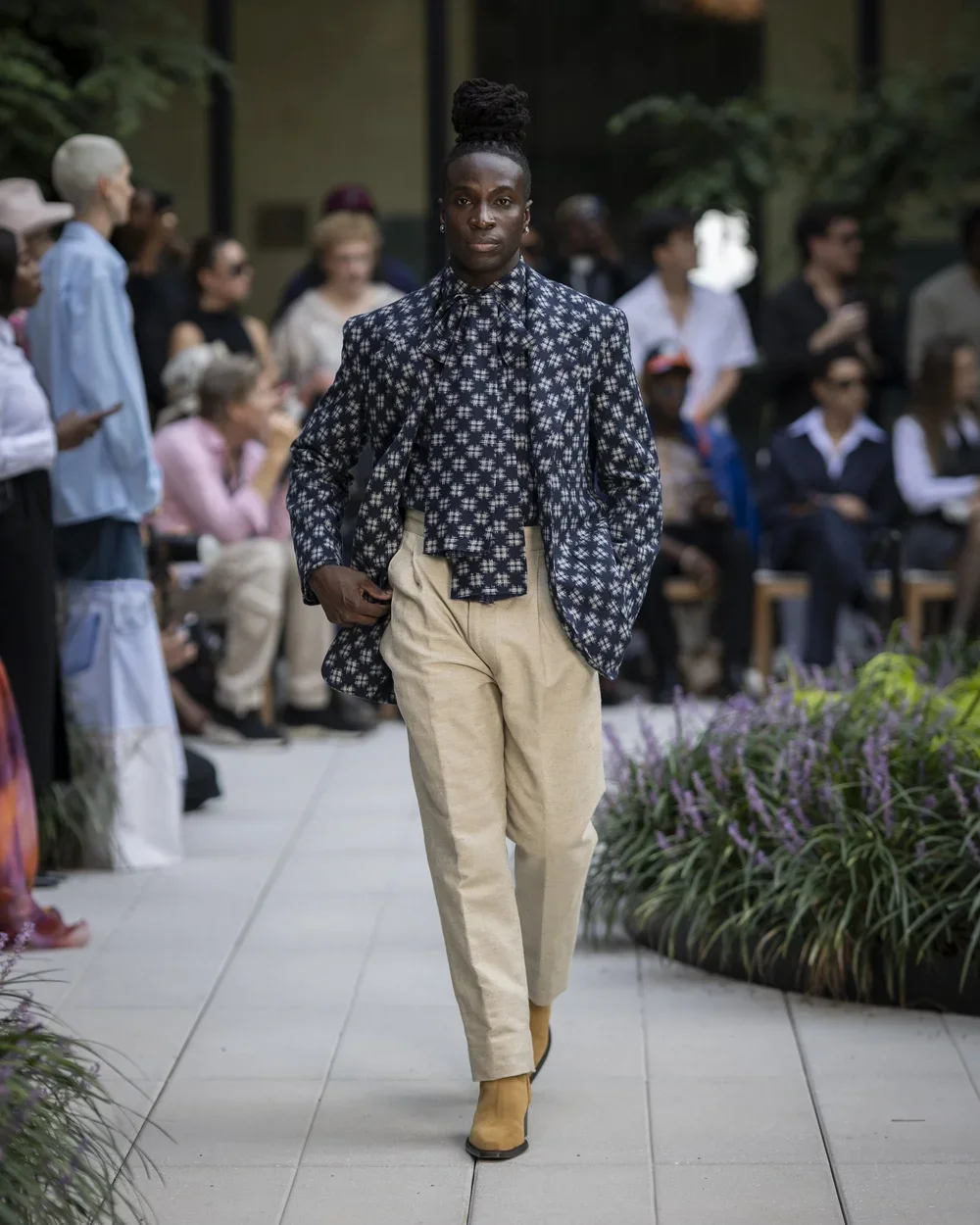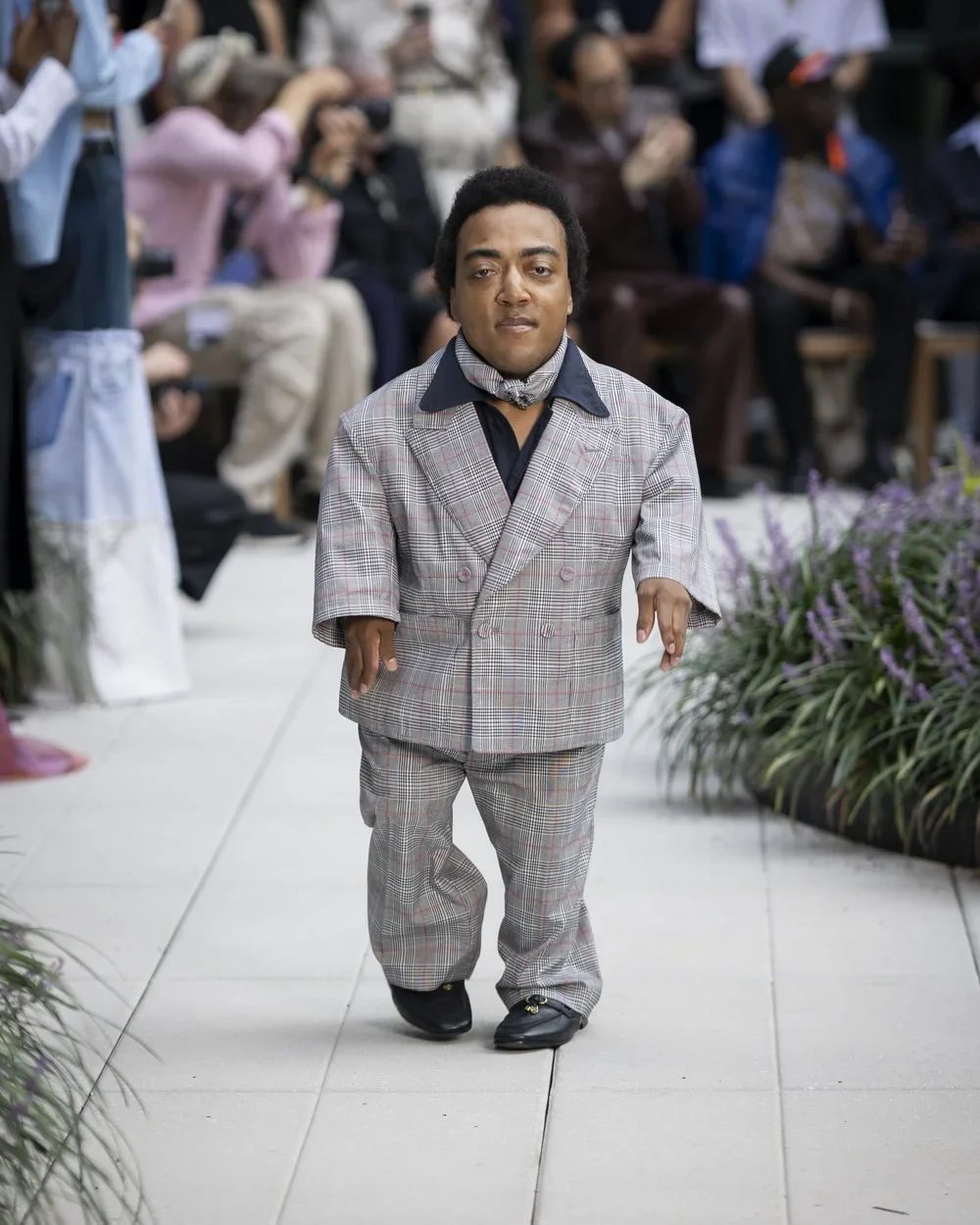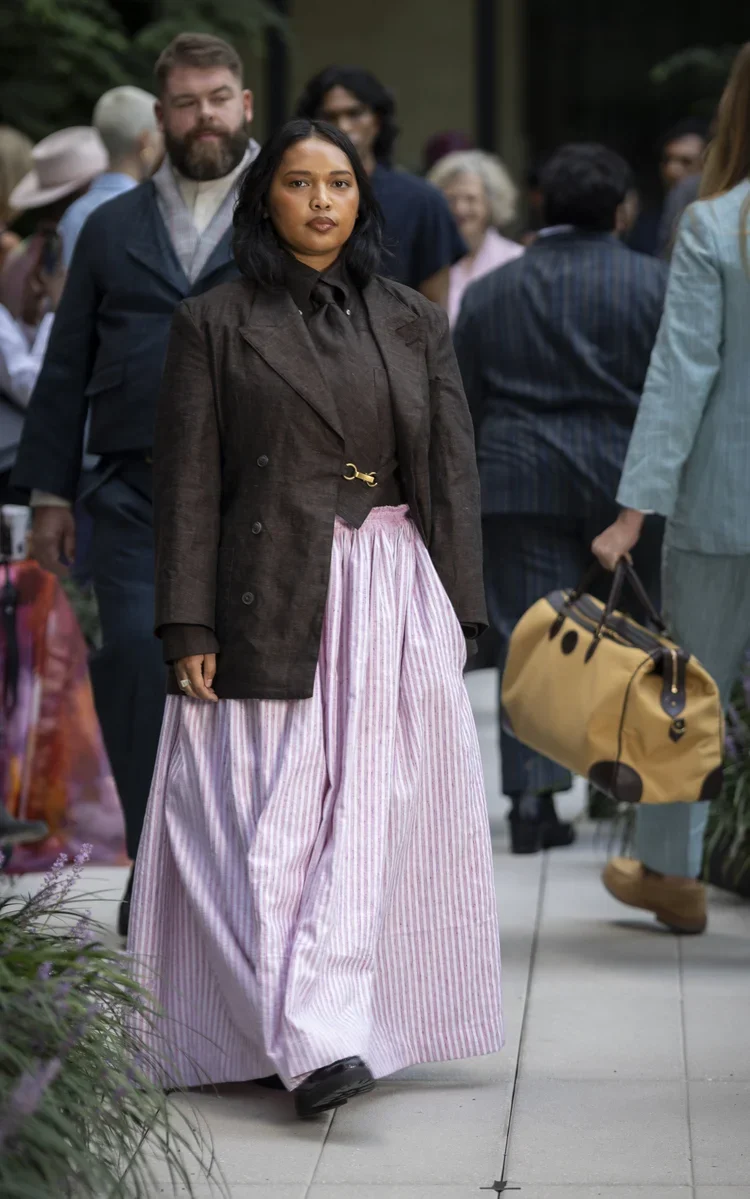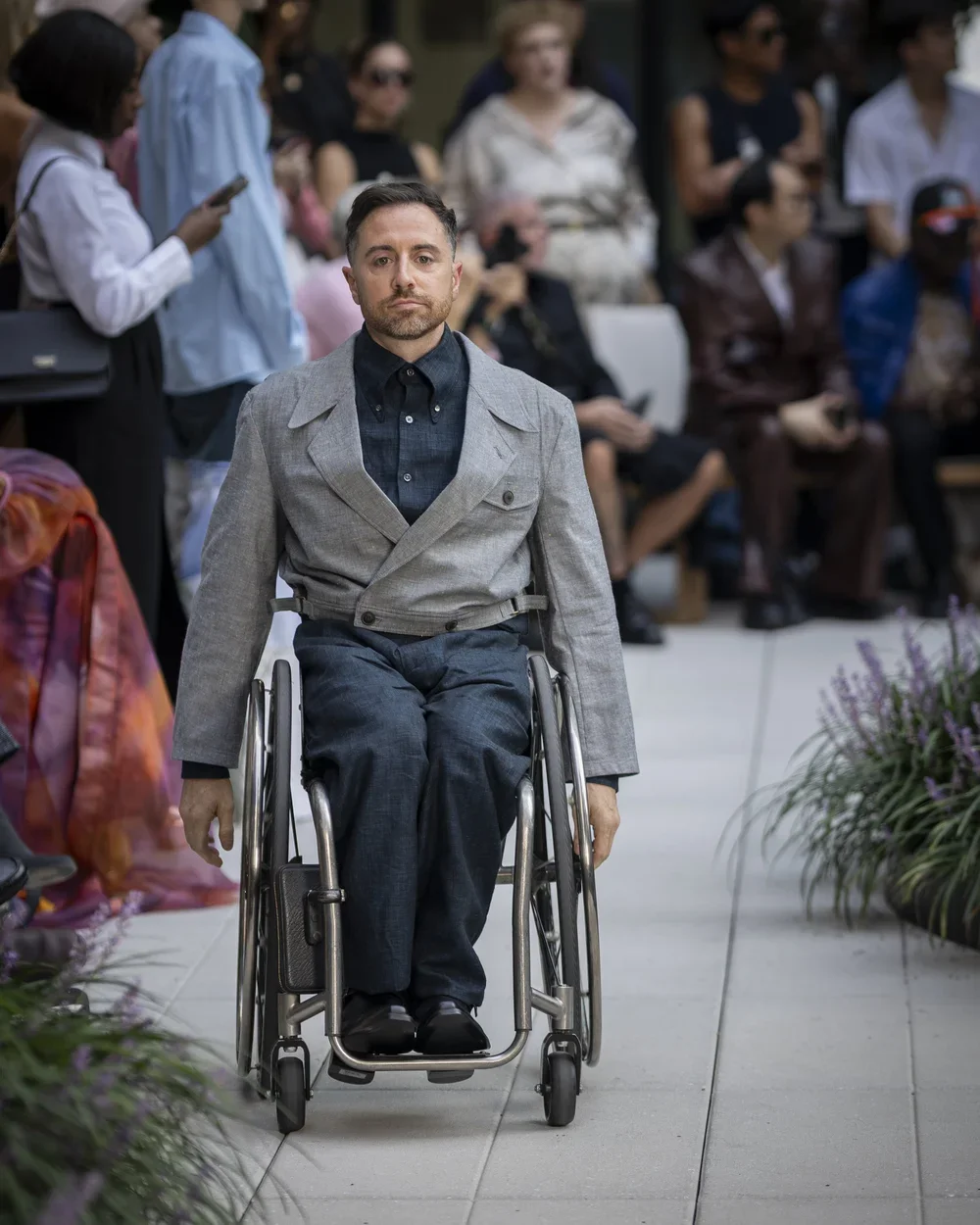How Jack Sivan is Making Waves in Menswear
“Inclusion is not just about healthcare, housing, transport, education — it is equally about identity and self-worth and how you express it. This that makes access to style so important.” –Michael Shamash
New York Fashion Week houses hundreds of designers every year, with each one bringing their own principles and design ethos to the table. The Spring/Summer 2026 season brought back Jack Sivan for his 11th show, and the designer continued to showcase the importance of representation in menswear.
This season’s collection, entitled “Sivan Boulevard,” showcased menswear garments reimagined in unique ways; however, the show was elevated to another level due not only to the fashion but also because of the diverse cast of models. People from all walks of life were represented –including individuals with disabilities, such as a model with dwarfism and a model who uses a wheelchair –as well as older models, plus-size models, models of color, women, and gender-non-conforming models. Representation to such a great extent is always important and always matters, especially in fashion. Especially in menswear collections, that sees some of the least diversity every year.
Aubrey Smalls for Sivan Apparel S/S 2026, casting by Persephone Bennett, photo by Tessa Bury, courtesy of Sivan Apparel
The garments of the collection called on the sartorial codes ingrained in menswear, but added a layer of modernity and whimsy. The models acted as characters, with titles such as “The Sommelier,” “The Romantic,” and “The Patron of the Arts,” to name a few. The garments they wore represented their professions in inventive ways — allowing the viewer to add to the story down the runway by way of their own imagination. The world created on this collection was a real world inhabited by real people — an important theme of the show.


Sivan Apparel S/S 2026, casting by Persephone Bennett, photo by Tessa Bury, courtesy of Sivan Apparel.
In this show, and all of fashion, garments represent more than fabric manipulation. A blazer tells a story, as does the person that wears it, the hands that created it, and the people that see it. Because Sivan’s work is deeply intertwined with his ethics, his garments carry deep meaning.
Menswear, as a sector of the fashion industry, is more often than not lacking in equitable representation. While womenswear has seen a recent push and improvement in its casting and sizing, menswear has yet to meet those same standards — standards which are low to begin with. According to a 2024 Teen Vogue article and Vogue Business research, “Of the 8,763 looks presented across 208 shows and presentations, 0.8% were plus-size (US 14+), 4.3% were mid-size (US 6-12) and 94.9% were straight-size (US 0-4). Plus-size representation is level with last season, at 0.8%.” These statistics, which pertain only to body size representation, scratch the surface of fashion’s clear refusal to showcase diverse bodies.
Kezia for Sivan Apparel S/S 2026, casting by Persephone Bennett, photo by Tessa Bury, courtesy of Sivan Apparel.
Representation and sustainable design are not a trend for Sivan; rather they are the principles by which he creates. His website declares that, “Sivan believes sustainable design is inherent in good design. Responsibility in design, production, distribution and eventual disposal is the future of the industry. It is essential, as an emerging brand, to build in an expectation of ethics as a brand cornerstone.”
Steve Serio for Sivan Apparel S/S 2026, casting by Persephone Bennett, photo by Tessa Bury, courtesy of Sivan Apparel.
Ethical and sustainable fashion pertain to all applications of the words — it does not start nor stop at manufacturing and labor conditions, rather it touches representation, subject matter, social context, and more. Designers like Jack Sivan are proving that equitable representation is the only way forward for the industry.



